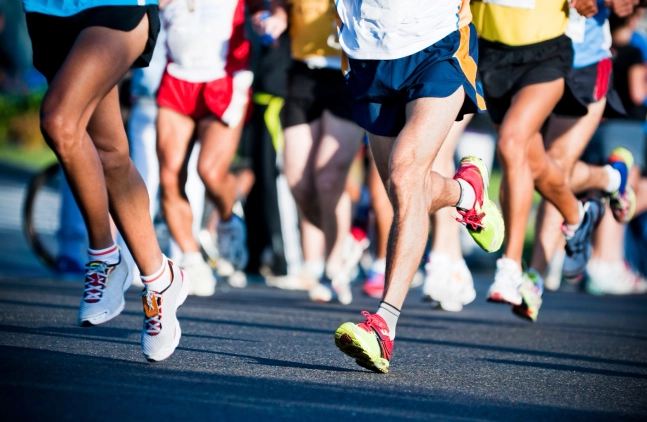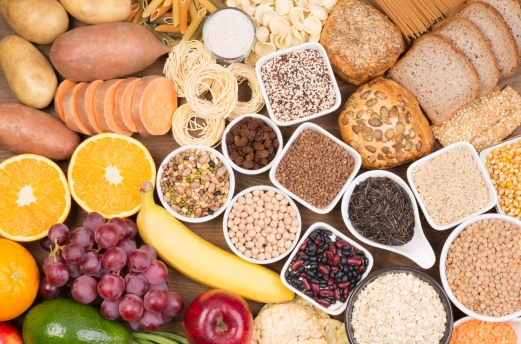Muscle glycogen is the main source of energy during intense or long-term effort. To optimize your sporting performance during a competition, it's important to increase your glycogen reserves.
The solution lies in an adapted carbohydrate overload: athletes need to consume more carbohydrates in the days leading up to the sporting event they are preparing for. This nutritional strategy can be implemented through a variety of carbohydrate-rich foods such as pasta, rice, or cassava maltodextrin, a supplement we'll be introducing that is effective for glycogen storage.
In this article, we first examine the nature of glycogen and its role in sports performance. We will then detail scientifically-proven strategies for increasing your reserves, notably through daily nutrition. Finally, we'll present a practical guide to the foods you need to maximize your stores and optimize your energy metabolism.
What is glycogen and why is it important for athletes?
Glycogen is the body's main form of glucose storage. This complex molecule is made up of numerous interlinked glucose molecules, forming a branched structure for efficient energy storage. This particular structure enables rapid mobilization of glucose when the body needs it, particularly during physical exertion.
Localization and storage in the body
Glycogen is mainly stored in the liver and muscles, with distinct roles for each location:
- Liver glycogen (approx. 100 g) regulates blood glucose levels between meals and overnight. It plays a crucial role in maintaining stable blood sugar levels.
- Muscle glycogen (approx. 400 g) supplies energy directly to the muscles during physical effort. This reserve can only be used by the muscle, which stores it.
A sedentary adult stores around 500g of total glycogen, but this capacity can increase significantly in a trained athlete, reaching up to 700g thanks to regular training and a suitable diet.
Crucial role in sports performance
During exercise, glycogen becomes the fuel of the muscles. Its importance can be seen in all sports.
For example, in endurance sports such as marathon or trail running, depletion of reserves can lead to the phenomenon of the "marathon wall". This critical moment generally occurs after 2-3 hours of sustained effort, when glycogen stores are depleted, leading to a sharp drop in performance.

Metabolism during exercise
Glycogen utilization varies according to the intensity and duration of effort:
- intense effort: rapid and preferential use of muscle glycogen ;
- moderate efforts: combination of glycogen and fatty acids;
- long efforts (>2h): gradual depletion of reserves requiring a refueling strategy based on recovery drinks, energy bars or gels.
Impact on recovery
The level of glycogen reserves also influences post-workout recovery. In fact, when combined with protein, carbohydrates enable faster recovery(1).
Moreover, depleted stocks require 24 to 48 hours for complete reconstitution, depending on diet and level of exhaustion. This recovery phase is essential to maintain optimum performance during subsequent training sessions.
To optimize your sporting performance, it's essential to understand how to effectively increase and manage your glycogen reserves, which is what we'll be looking at in the rest of this article.
What are the strategies for increasing reserves?
Carbohydrate overload is the main strategy for maximizing glycogen reserves. This approach needs to be adapted according to the type and duration of physical activity.
Fundamentals of overloading
To optimize glycogen storage, three factors are essential:
- The amount of carbohydrates consumed
- Timing of inputs
- Good hydration (2.5-3.5 liters of water per day)
Protocols by type of effort
- For endurance events (>60 minutes): preparation begins 3 days before the event with a carbohydrate-rich diet. The aim is to reach 8 to 9 g of carbohydrates per kg of body weight. This strategy ensures optimal glycogen overload for events such as marathons.
- For ultra-endurances : events such as ultra-trails require a higher carbohydrate overload, up to12-13 g/kg in the three days leading up to the event. This increase enables maximum reserves to be built up for these extreme efforts. Note that there is a plateau above 13 g/kg, so there's no need to exceed these dosages.
- For team sports: the strategy differs for soccer, rugby and handball, where the target is 6-8g/kg over the 24 hours prior to the match. This more moderate quantity is better suited to the needs of these intermittent sports.
Here's a table to summarize this information.
| Type of effort | Carbohydrate intake | Protocol duration |
|---|---|---|
| Classic Endurance | 8-9 g/kg/day | 3 days |
| Ultra-endurance | 12-13 g/kg/day | 3 days |
| Team sports | 6-8 g/kg/day | 24 heures |
These intakes must be accompanied by sufficient hydration to optimize storage.
The success of this strategy depends largely on the choice of food. Let's take a look at the best foods for building up these reserves effectively.
Which foods replenish glycogen reserves?
The strategic importance of the glycemic index
To optimize glycogen storage, it's best to choose foods with a low glycemic index. This approach ensures more stable carbohydrate absorption and better long-term storage. Low-GI foods cause a moderate rise in blood sugar levels, enabling more efficient utilization by muscles and liver.
Starchy foods (low to moderate GI)
- Pâtes complètes cuites al dente (IG < 55)
- Quinoa (GI = 35)
- Légumineuses : lentilles, pois chiches (IG < 40)
- Whole-grain basmati rice (GI = 50)
- Potatoes (moderate GI when cooled)
Fruits and vegetables
- Apple (GI = 38)
- Pear (GI = 38)
- Oranges (GI = 40)
- Root vegetables: sweet potato, carrot (moderate GI) if lightly cooked

Prefer whole-food versions, as these tend to have a lower GI than others, thanks to the other nutrients they contain. Cooking can radically change the GI of a food. Choosing foods al dente helps to limit GI compared to more thorough cooking.
Cassava maltodextrin: an interesting supplement
If you also wish to supplement your diet, cassava maltodextrin is a particularly interesting solution for several reasons.
Cassava maltodextrin is characterized above all by its glucose polymer molecular structure, enabling it to be gradually absorbed by the body. Its excellent digestibility makes it particularly interesting for athletes, especially as it does not cause digestive discomfort, unlike other carbohydrate sources.
Cassava maltodextrin offers several major advantages for athletes. It ensures stable blood sugar levels, avoiding energy peaks and troughs. Its solubility makes it easy to incorporate into drinks, providing optimal support for carbohydrate intake prior to exercise. It is particularly popular with runners.
It can therefore be used to supplement your carbohydrate load in the days leading up to the competition, and even as a carbohydrate supplement during exercise, in an endurance drink, if supplemented by other elements.
In the glycogen loading phase, it makes it easy to supplement the carbohydrate intake of the diet without overloading the digestive system, so as to reach the desired dosage more easily.
Foods to limit
For optimum efficiency, it is advisable to limit :
- Refined sugars
- White bread
- Processed breakfast cereals
- Sweet desserts
- Industrial sweetened beverages
Conclusion
Managing glycogen reserves is a key factor in sports performance. A balanced diet combined with an appropriate consumption strategy helps optimize muscle glycogen stores.
The key lies in careful planning of meals and snacks, giving priority to low-glycemic index carbohydrates and increasing the quantity consumed in the days leading up to the competition.
This initial preparation phase, followed by optimal management during the effort with energy drinks and good hydration, will help maintain a stable blood glucose level and avoid the dreaded "marathon wall".
Post-exercise glycogen resynthesis must not be neglected to optimize recovery time. Particular attention to carbohydrate and protein intake in the hours following exercise, combined with a balanced diet over the long term, will enable you to maintain peak performance while preserving your health.
Here's a table to remind you of the important information in the article:
| ⚡️ Key aspect | Details |
|---|---|
| 🍝 Carbohydrate overload | Increased carbohydrate consumption before competitions |
| ⏳ Endurance exhaustion | Risk of "wall" after 2-3 hours of intense running |
| 🥔 Low GI foods | Favour wholemeal pasta, quinoa, sweet potatoes, but be careful when cooking. |
| 💧 Essential hydration | Drink 2.5-3.5L of water to maximize reserves |
| 🌽 Cassava maltodextrin | Carbohydrate supplement, ideal digestibility for athletes |
| 🚫 Foods to avoid | Limit refined sugars, sweet drinks, white bread |















